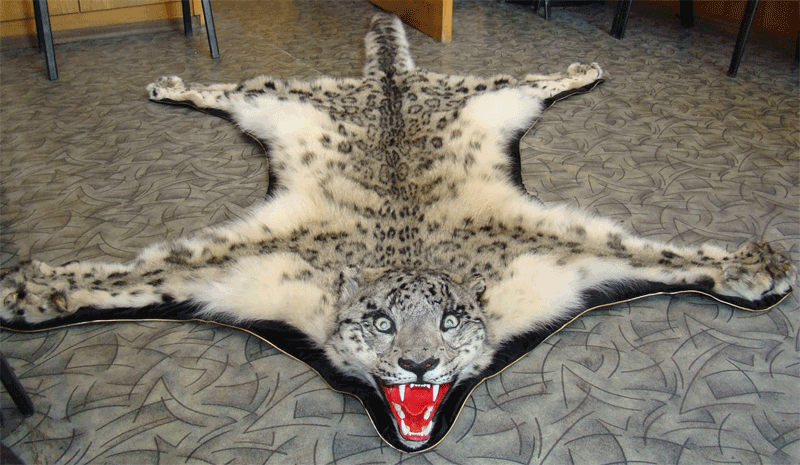
Snow leopards share their range with pastoral communities who also require healthy rangelands to sustain their livestock and livelihoods. Moreover, these high altitude mountains and plateaus provide invaluable ecosystem services through carbon storage in peat lands and grasslands, and serve as Asia’s ‘water towers’, providing fresh water for hundreds of millions of people living downstream in Central, East, and South Asia. But the pace of rural development has increased, opening up previously remote parts of snow leopard range, livestock grazing has expanded and intensified, and new factors have emerged that may threaten the future of snow leopards and their habitat, e.g., notably increased resource exploitation and climate change; all of which have created new challenges for snow leopard conservation.
Rodney Jackson, et. al., eds., Snow Leopard Survival Strategy: Revised Version 2014.1 (Seattle: Snow Leopard Network, 2014).
LACK OF AWARENESS
and understanding of the snow leopard’s value to the environment.

Photo: Ghulam Mohammad/BWCDO
REDUCTION IN WILD PREY
due to competition for grazing land with domestic flocks and the hunting of wild ungulates.

Photo: Ghulam Mohammad/BWCDO
LOSS & DISRUPTION OF THE HABITAT
due to the even-encroaching human population with its expanding infrastructure development, including construction of new roads and rail lines, fences and barriers, dams for harnessing hydroelectric power, pipelines for extracting resources such as oil and natural gas, and mining operations for gold, semiprecious stones, copper, and other minerals.

Bishkek, Kyrgyzstan
SECONDARY OR BY-CATCH SNARING AND POISONING
meant for other species is a threat to snow leopards. Additionally, snow leopards are attacked by feral dogs.

Photo: S. Spitsyn
DISEASES
carried by domestic and other wild animals. Although there are few reports of deaths attributed to disease, there have been reported cases of canine distemper, feline leukemia, tuberculosis, anthrax, and one report of rabies in the 1940s.

Photo: Ghulam Mohammad/BWCDO
POACHING
is considered a key threat although it is illegal to trade in snow leopards or their body parts internationally as the snow leopard has been included in Appendix I of the Convention on International Trade of Endangered Species (CITES) that lists species threatened with extinction since 1975. In addtion, all twelve range countries have laws that prohibit hunting or trading snow leopards. Unfortunately, there is, indeed, evidence that snow leopards are still killed and sold for their fur, skin, bones, claws, and teeth.

CLIMATE CHANGE
is already starting to have an effect on biodiversity because of changes to habitat. With climatic warming, permafrost layers beneath the snow leopard’s range will warm resulting in a lowering of the water table. Meadows will be replaced by grasslands, and springs and streams will dry up, which will result in smallers populations of wild prey species. The tree line will advance to higher elevations, resulting in a loss of habitat for the snow leopard. Computer models also show evidence of fragmentation of the snow leopard’s entire habitat caused by the upward shift of the tree line. This fragmentation will isolate individual snow leopards from one another, reducing genetic diversity and the health of the species.

Photo: Tashi Ghale
Excerpts – Shavaun Mara Kidd and Bjorn Persson, Searching for the Snow Leopard, Guardian of the High Mountains, (New York: Arcade Publishing, 2020), 131-133.
